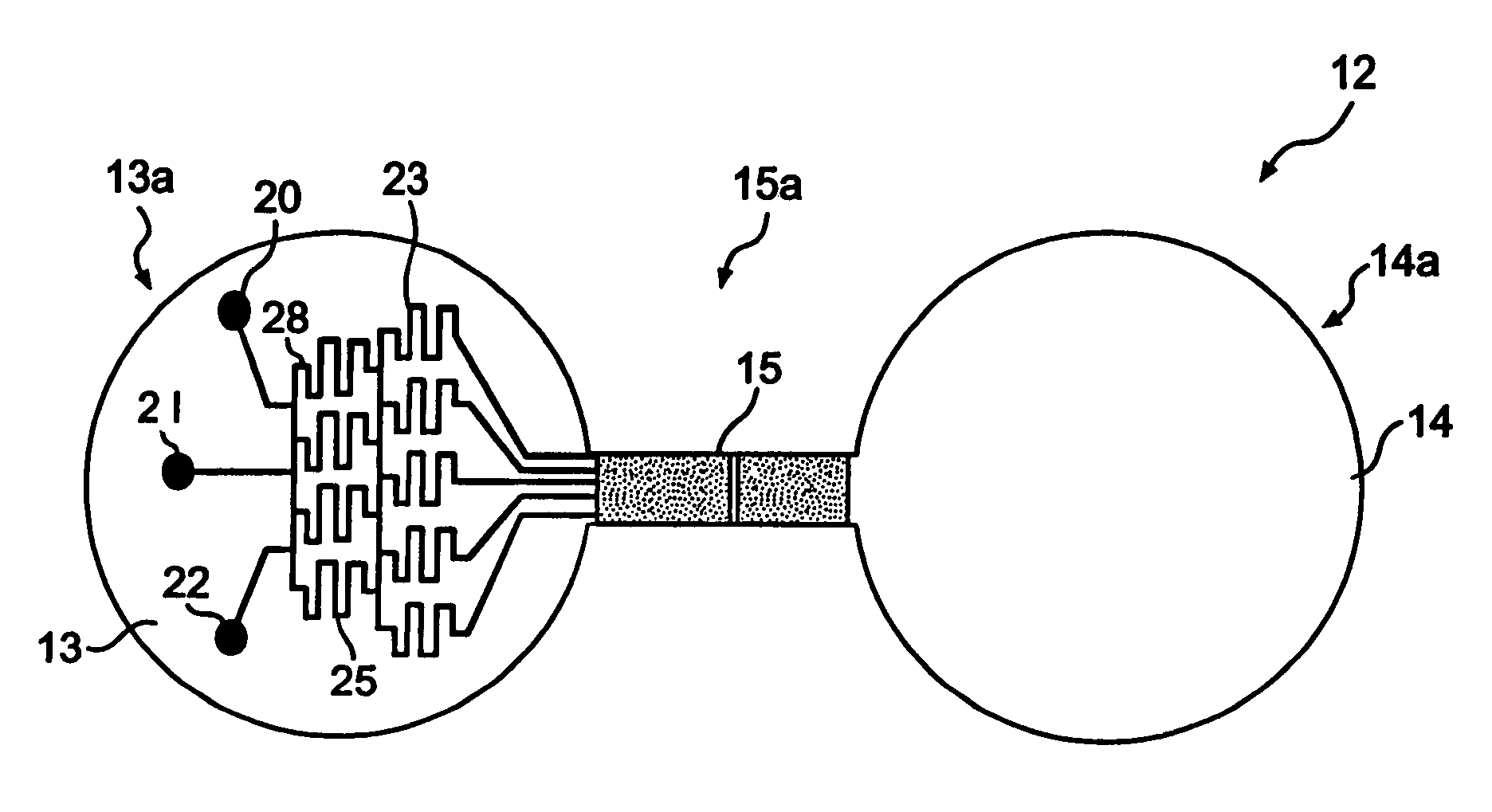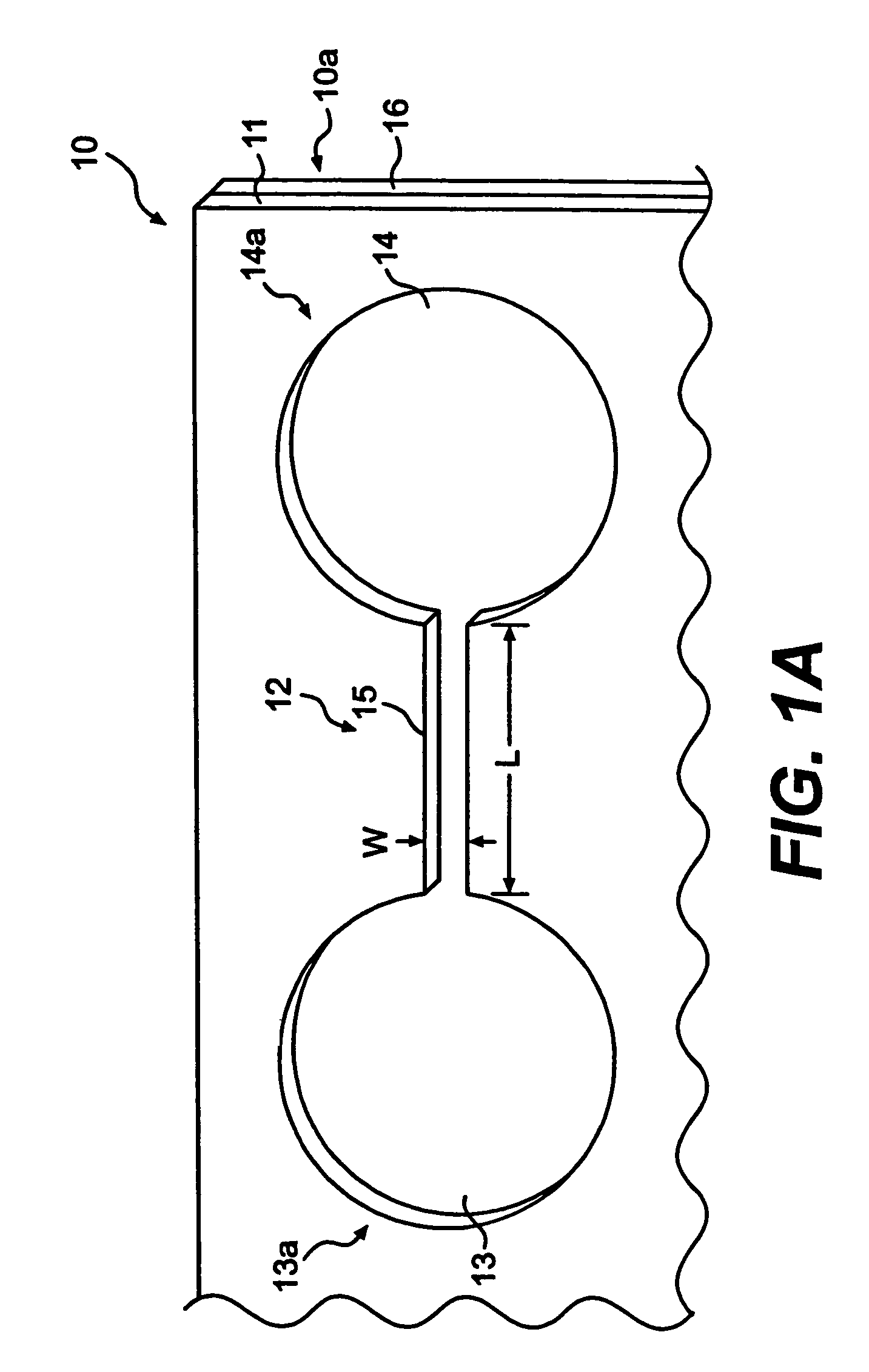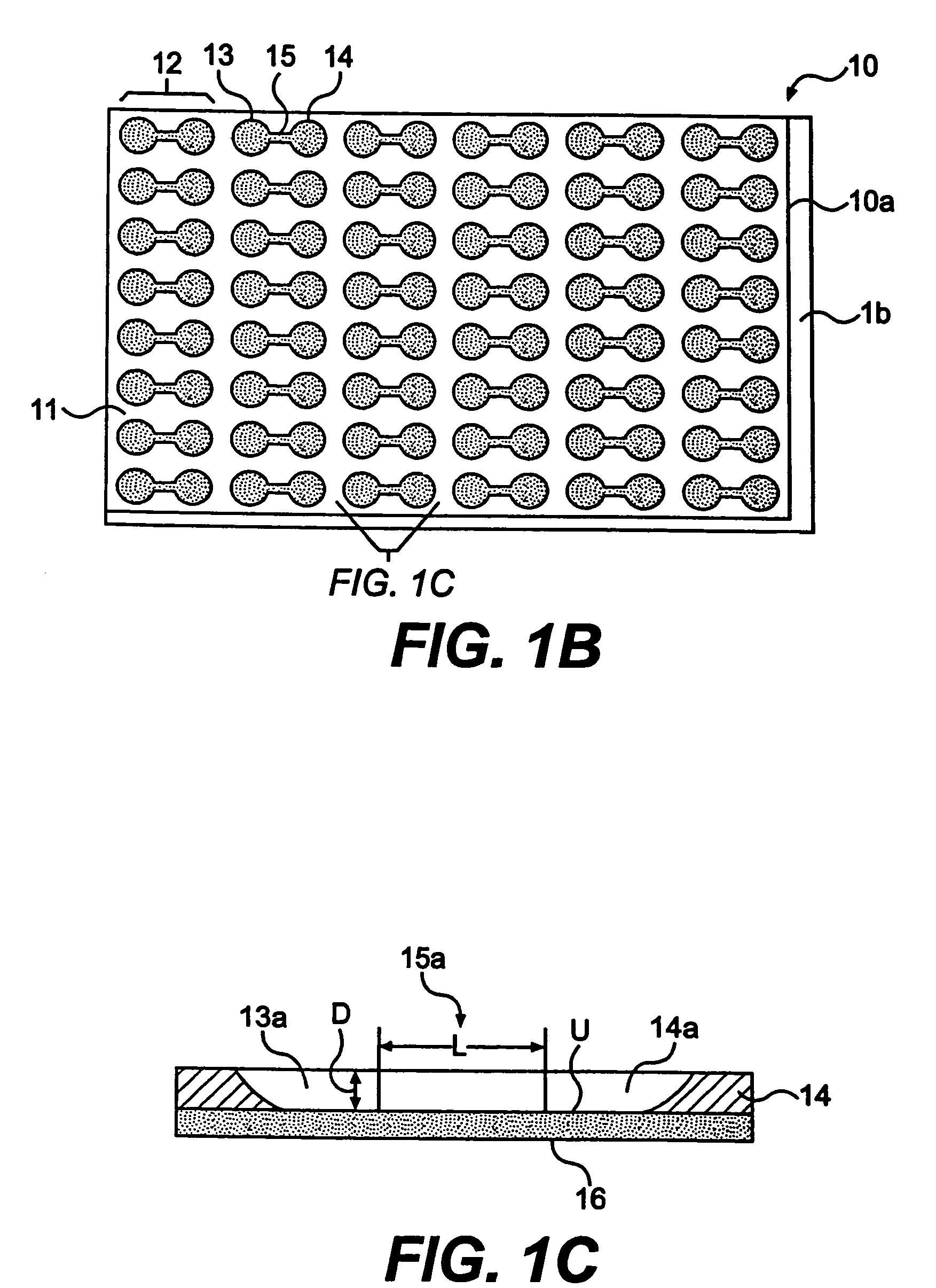Biological assays using gradients formed in microfluidic systems
a microfluidic system and gradient technology, applied in the field of biological assays using gradients in microfluidic systems, can solve the problems of inability to easily adapt to high-throughput screening and processing, lack of capillary production can contribute to tissue death in cardiac muscle, and inability to use transwells for screening and processing
- Summary
- Abstract
- Description
- Claims
- Application Information
AI Technical Summary
Benefits of technology
Problems solved by technology
Method used
Image
Examples
example 1
Procedure for Fabrication of Chemoinvasion Device
[0122]A silicon wafer (6 inches) is spin coated with photoresist (SU8-50) at 200 rpm for 45 seconds. After baking the wafer on a hot plate at 115° C. for 10 minutes, the wafer is allowed to cool to room temperature. A mask aligner (EVG620) is used to expose the photoresist film through a photomask. Exposure of 45 seconds is followed by another hard bake at 115° C. for 10 minutes. The silicon wafer is allowed to cool to room temperature for over 30 minutes. The uncrosslinked photoresist is removed using propylene glycol methyl ether acetate (PGMEA). The wafer is dried under a stream of nitrogen, and the patterned photoresist is ready for subsequent processing.
[0123]In one embodiment, the patterned photoresist is spin-coated with another layer of SU8-100 at 1500 rpm for 45 seconds. A mask aligner is used to selectively expose macrofeatures (i.e. wells) of the top member but not expose channel regions connecting the wells and other areas...
example 2
Placement of Cells and Test Agent in Chamber
[0125]The first and second wells of a chamber of a top member are filled with phosphate buffered saline solution, PBS. The bottom of the second well may be treated with fibronectin (1 mg / ml) or other extracellular matrix protein for 30 minutes, followed by washing twice with PBS. After aspirating PBS, astrocytoma cells (U87-MG) are plated in 50 μl of freshly warmed medium in the second well (25,000 cells per well of a 24-well plate, in volume of 50 μl of solution per well). The cells deposit through the second well of the chamber, and attach to the bottom of the second well.
[0126]Cells are left to attach and spread in the second well overnight in a 37° C. incubator. At the start of the experiment, the cell medium is exchanged for fresh serum-free medium. 10 μg of bFGF (basic fibroblast growth factor) per ml of medium is added to the first well of each chamber.
Image Acquisition and Data Analysis
[0127]Digital Images a...
example 3
Cell Chemoinvasion Inhibition Assay Using Solution Gradient
Placement of Cells and Test Agent in Chambers
[0128]With respect to three chambers, the wells of each chamber of a top member are filled with PBS. The bottom of the second wells may be treated with fibronectin (1 mg / ml) or other extracellular matrix protein for 30 minutes, followed by washing twice with PBS. After aspirating PBS, U87-MG cells are plated in 50 μl of freshly warmed medium in the second wells (10,000 cells per well of a 24-well plate, in volume of 50 μl of medium per well). The cells deposit through the second wells of each chamber, and adhere to the bottom of the second wells.
[0129]Cells are left to attach and spread in the second wells overnight in a 37° C. incubator. At the start of the experiment, the cell medium is exchanged for fresh serum-free medium or 1% serum. 1 μg of bFGF (basic fibroblast growth factor) per ml of medium is added to the first wells of the chamber. A solution gradient is allowed to for...
PUM
| Property | Measurement | Unit |
|---|---|---|
| thick | aaaaa | aaaaa |
| length | aaaaa | aaaaa |
| diameter | aaaaa | aaaaa |
Abstract
Description
Claims
Application Information
 Login to View More
Login to View More - R&D
- Intellectual Property
- Life Sciences
- Materials
- Tech Scout
- Unparalleled Data Quality
- Higher Quality Content
- 60% Fewer Hallucinations
Browse by: Latest US Patents, China's latest patents, Technical Efficacy Thesaurus, Application Domain, Technology Topic, Popular Technical Reports.
© 2025 PatSnap. All rights reserved.Legal|Privacy policy|Modern Slavery Act Transparency Statement|Sitemap|About US| Contact US: help@patsnap.com



